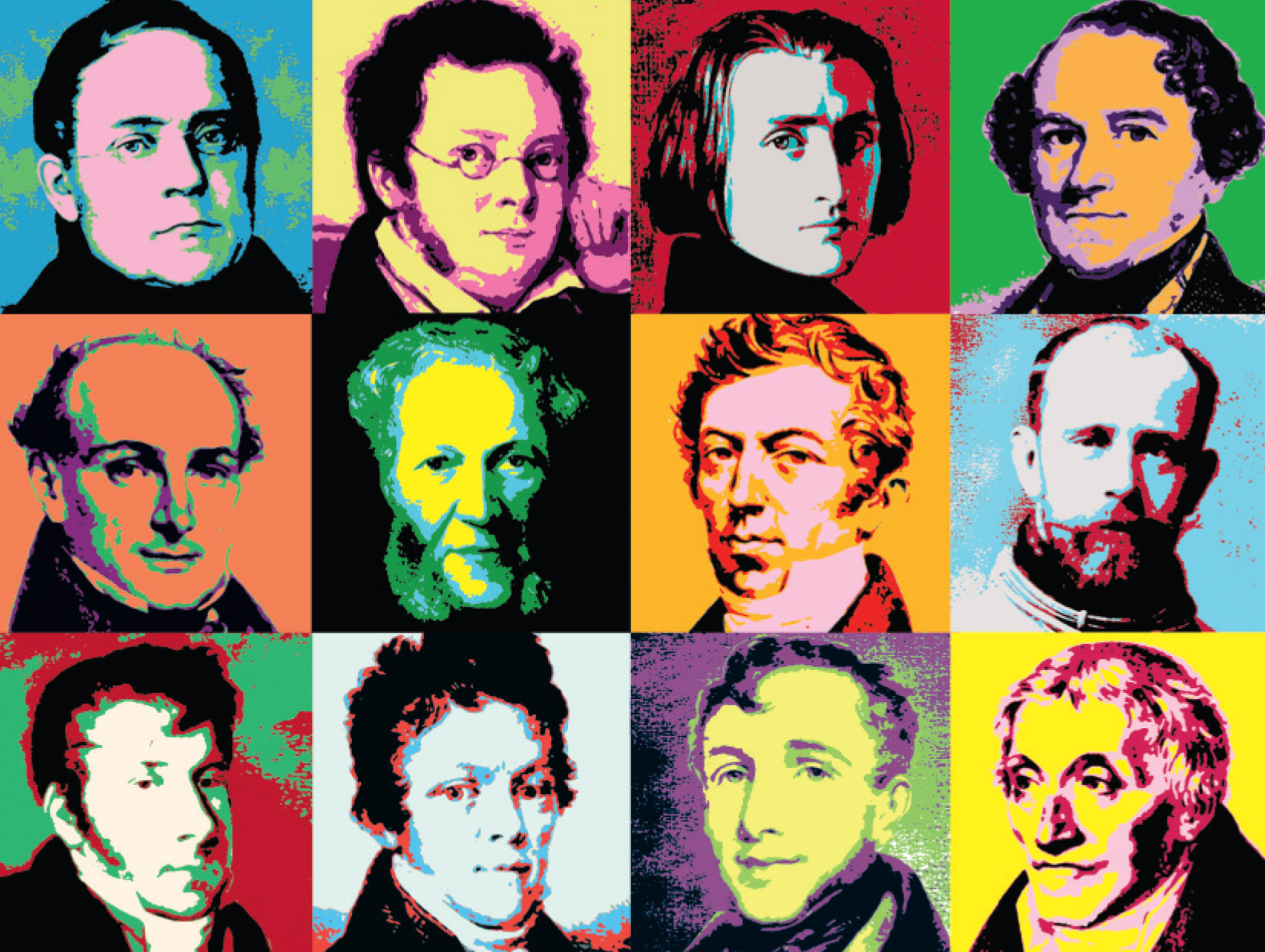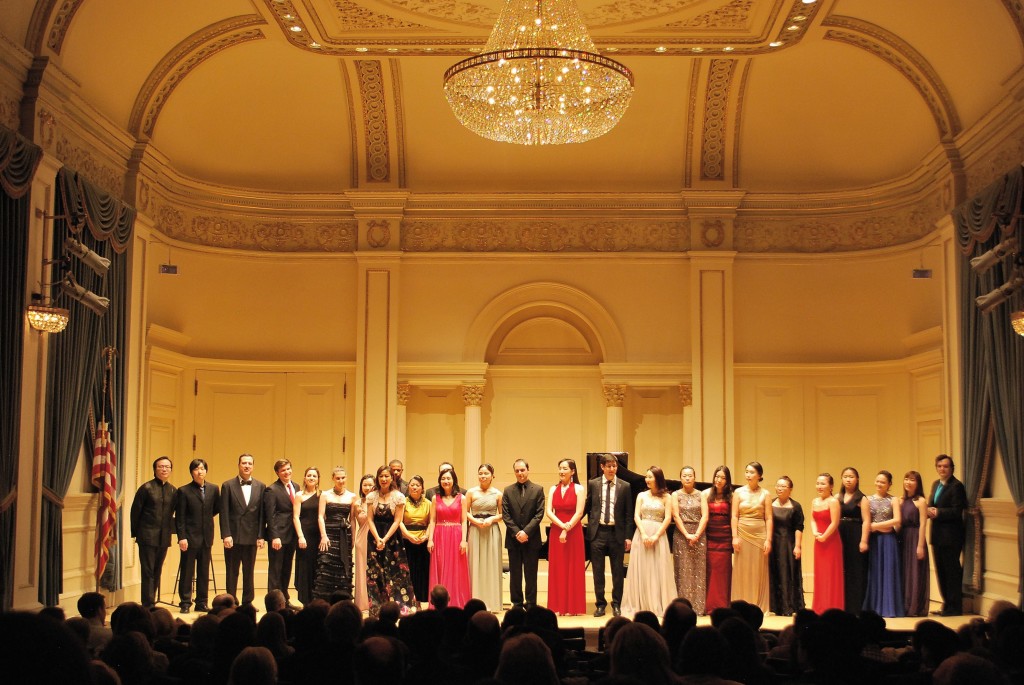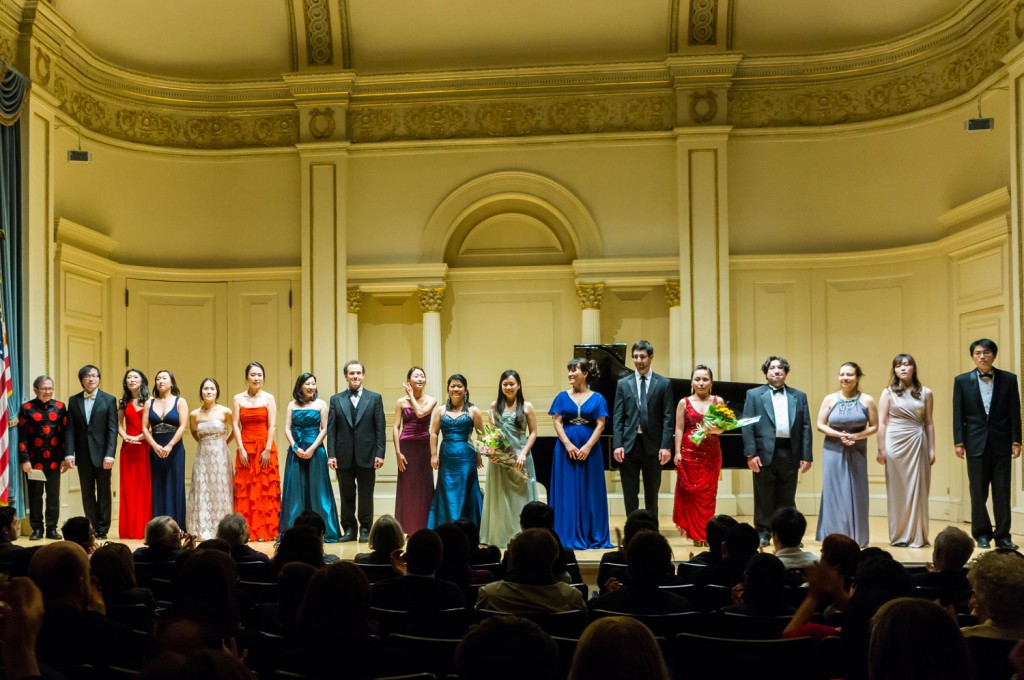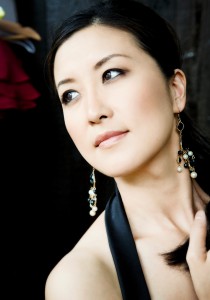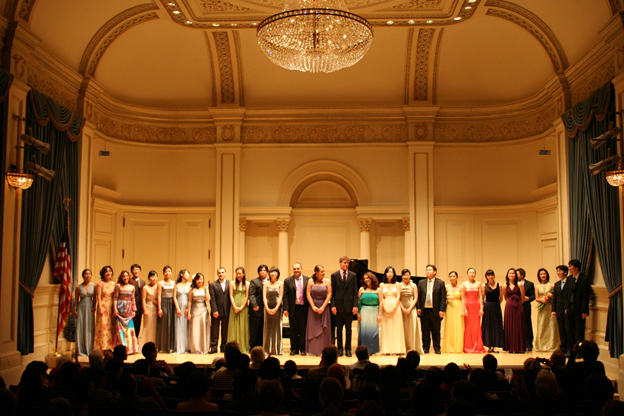Mason Gross School of the Arts presents “The Unknown Diabelli Variations”
With pianists from the Mason Gross School of the Arts
Min Kwon, artistic director
Weill Recital Hall at Carnegie Hall, New York, NY
February 17, 2015
Mardi Gras is a day for excess before the penitential season of Lent. There certainly was an excess of variations on a waltz by Diabelli at Weill Recital Hall last night, and an excess of pianists and composers, all under the watchful, charmingly humorous eye of their mistress of ceremonies, Min Kwon. Call it “50 Shades of Diabelli,” if you will.
Nearly everyone knows of the great Beethoven set of 33 variations (Op. 120) on what he termed a “Schusterpfleck” (cobbler’s patch), the inane waltz by Anton Diabelli, with its square, symmetrical phrasing and obvious sequences. There was even a Broadway play (2009) called 33 Variations, starring Jane Fonda as a musicologist on the trail of secrets about the piece.
The mission of the Mason Gross piano department was to correct the imbalance, and to present the other fifty composers’ responses to Diabelli’s vanity request. Diabelli was an important Viennese music publisher, and I imagine you wouldn’t want to get on his bad side. He published Beethoven’s monumental set by itself as Volume I, and all the others as Volume II.
Nearly all of these other composers, with the notable exceptions of Schubert and Liszt, are nearly or completely forgotten today, so much so that even the enterprising Ms. Kwon, who read interesting facts about each before their variation (and introduced each pianist), had nothing to say about a few of them.
Twenty-five (!) pianists divided the set among them, each taking one, two, or three of the variations, some of which presented nightmarish problems of digital dexterity, in the best tradition of early-nineteenth century Viennese pianistic showmanship. Sadly, the inspiration level of the variations was, at least 95% of the time, as banal as the generating tune that gave rise to the whole thing, but the inspiration level of the performers, including their commitment, joy, and technical ability, was much higher.
Beethoven immediately set about pulling apart the theme, teasing out every motivic implication as only he could. Given a waltz, he turned Variation I into a march in 4/4 time, and so on. By the time this metaphysical journey is over, the lowly waltz “caterpillar” has been transformed into a courtly minuet “butterfly.”
The fifty composers’ primary approach was for the “ornamental” variation, in which the main features of the original are very much on the surface. I counted only four who even dared venture into the minor mode, including the haunting Schubert contribution, a waltz that managed to say more about Schubert than the source material. It was gorgeously rendered by Nathaniel Francis. The variation by C.M. von Bocklet, a friend of and interpreter of Beethoven, sounded like he had heard Beethoven’s own Variation XXI, perhaps in private in Beethoven’s quarters. Others chose fugal imitation as a response, there was even a Polonaise. A particularly lovely variation was by one Joseph Kerzowsky, about whom nothing was known other than his participation in this set. That was played meltingly by another of my favorite pianists of the evening, Di Wang. Liszt could be forgiven for his tempestuous C-Minor rant, buried in rushing figuration—it was, after all the product of an eleven-year old, who had only been studying with Czerny for three years. W.A. Mozart’s second son, Franz Xaver, contributed a rather dull variation, and Beethoven’s own Archduke Rudolph reveled in displaying his understanding of counterpoint with a largely fugal variation that didn’t really “arrive” anywhere.
I couldn’t tell whether all of the composers were being absolutely serious, or if they were trying to “out-trivialize” their given theme. By the second half of the concert, the signature features of Diabelli’s tune: the turn, the five-one “thump,” the sequence, were so distressingly familiar that one could have probably held a sing-along.
One very innovative facet of the evening was the presence of seven contemporary composers (also from Mason Gross School), and their own takes on Diabelli’s fling. These were offered as a sort of pianistic “sorbet,” placed after every seven or so of the older variations. These were mainly clever, but the standouts were: Chung Eun Kim’s jazzy flirt; and then the “encore” by Matt Anderson—a frenetic 7/8 romp, with the added interest of being scored for piano four-hands.
Overall, this was an interesting presentation, perhaps a bit too didactic for a real evening of “entertainment,” but I do salute and appreciate the talent and hard work involved, and the seriousness of intent. There’s something really good going on in the piano (and composition) department of the Mason Gross School of the Arts at nearby Rutgers University.

